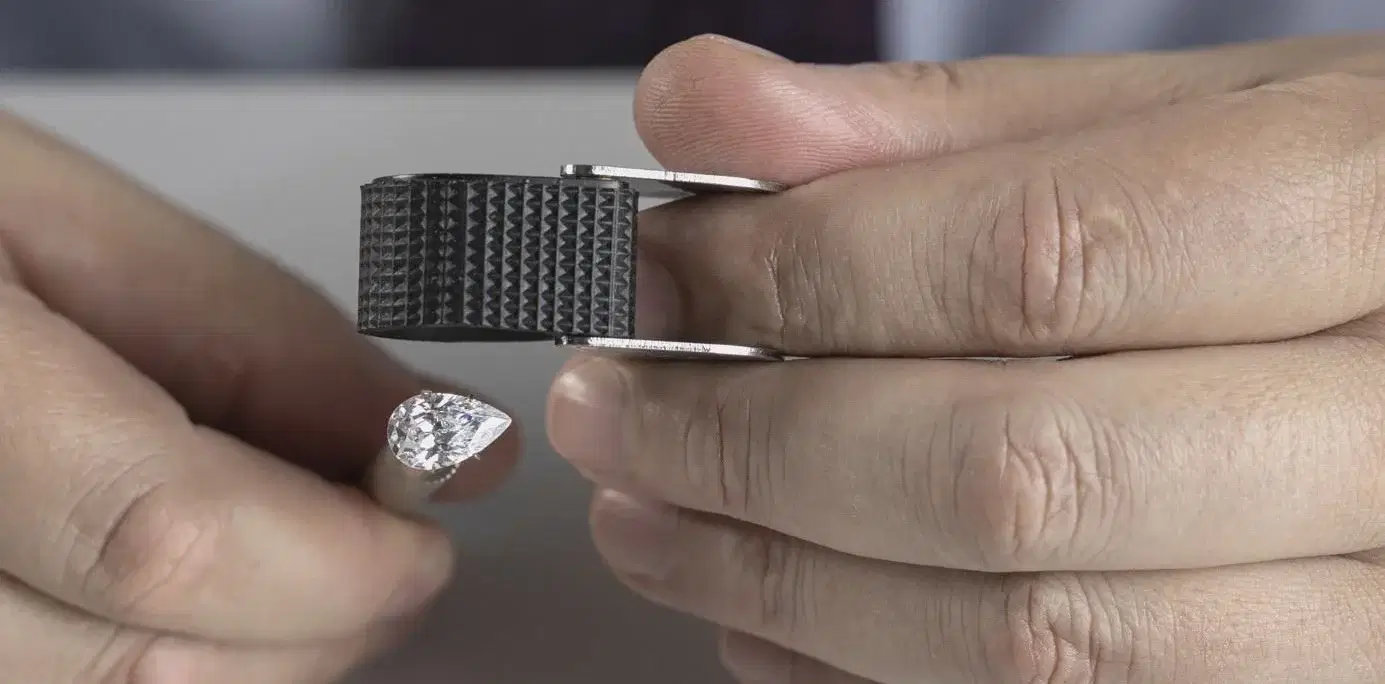The 4Cs—color, clarity, carat weight, and cut—are the cornerstone of diamond evaluation, as outlined below:
Color
According to GIA standards, colorless diamonds are among the most valuable. However, colored diamonds, whether natural or synthetic, are also highly sought after. Synthetic diamonds can be engineered into fancy-colored varieties, while natural diamonds may undergo treatments to alter or enhance their color.
Truly colorless diamonds are rare and command premium prices. Most diamonds on the market are near-colorless or exhibit light hues, commonly yellow or brown. The GIA uses a detailed color grading scale to measure how close a diamond is to being completely colorless.
It’s important to note that the color displayed in images or illustrations may differ from the actual hue observed under proper lighting or magnification. Avoid relying solely on your naked eye; instead, use a jeweler’s loupe or consult a professional to confirm the diamond’s precise color.
Carat
Carat refers to the weight of a diamond, with one carat equaling approximately 0.2 grams. As carat weight increases, so does the price, often exponentially. However, while carat weight is a straightforward metric, it’s not the sole determinant of a diamond’s overall appeal. Other factors, such as cut, often have a greater impact on brilliance and visual quality.
Clarity
Clarity assesses the presence of internal flaws (inclusions) or surface imperfections (blemishes) in a diamond. Diamonds range from "flawless," with no visible imperfections under magnification, to "included," where flaws are noticeable to the naked eye. The fewer imperfections a diamond has, the higher its clarity grade and value.
Cut
The cut of a diamond is a testament to its craftsmanship and has the greatest influence on its sparkle and brilliance. A well-cut diamond features precisely angled facets on its crown (top) and pavilion (bottom), which work together to reflect and refract light for maximum brilliance. The girdle (the diamond's outer edge) acts as the boundary between these two parts.
Diamond cuts come in various shapes, including round, princess, cushion, and oval. However, a diamond’s brilliance depends more on its cut quality than its shape. Proper symmetry, proportion, and polish are key to creating a diamond with exceptional fire, sparkle, and luster.
Understanding the 4Cs equips buyers to interpret diamond grading reports confidently and make informed decisions when purchasing a diamond.


